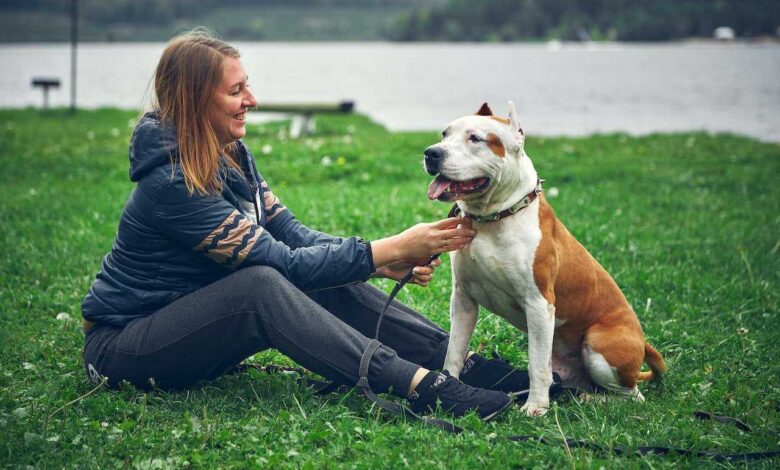Power of Positive Reinforcement: Training Your Pet with Rewards

Training your pet can be a rewarding and fulfilling experience for both you and your furry friend. One of the most effective and humane methods of training is through positive reinforcement. In this comprehensive guide, we’ll explore the power of positive reinforcement, how it can be applied to different pets, and the myriad benefits it offers.
What Is Positive Reinforcement?
Positive reinforcement is a training technique that focuses on rewarding desired behaviors rather than punishing undesirable ones. It involves providing your pet with rewards, such as treats, praise, or toys, immediately after they exhibit the behavior you want to encourage. This approach strengthens the likelihood of your pet repeating the desired behavior in the future.
Positive reinforcement is rooted in kindness and respect for your pet. It creates a positive learning experience and strengthens the bond between you and your animal companion. Unlike punishment-based methods, positive reinforcement avoids instilling fear or anxiety in your pet.
In Action
Dog Training
Basic Commands: When teaching your dog basic commands like sit, stay, or come, positive reinforcement is highly effective. Use small, tasty treats, and offer them as soon as your dog follows the command correctly. Pair treats with verbal praise and affection.
Leash Training: Positive reinforcement can transform leash walks into enjoyable experiences. Reward your dog for walking beside you without pulling. Gradually reduce treat frequency as your dog’s leash manners improve.
Addressing Unwanted Behaviors: To modify unwanted behaviors like excessive barking or jumping, withhold rewards when the behavior occurs and reward your dog when they display the desired, alternative behavior. For instance, reward quiet behavior instead of barking.
Cat Training
Litter Box Training: When training your cat to use the litter box, praise and reward them immediately after each successful use. This positive association reinforces proper litter box habits.
Scratching Alternatives: Cats have a natural instinct to scratch. Encourage them to use a scratching post by rewarding them with treats or affection when they do. Make the scratching post more appealing by sprinkling catnip on it.
Behavioral Challenges: To address behavioral issues like aggression or fearfulness, reward your cat for calm and relaxed behavior. Gradually expose them to triggers while providing rewards for non-aggressive or non-fearful responses.
Other Pets
While dogs and cats are the most common pets, positive reinforcement techniques can also be applied to other animals, such as rabbits, birds, and small mammals.
Basic Training: Many small mammals, like rabbits, can learn simple commands such as coming when called or hopping into a crate. Use rewards like fresh vegetables to reinforce these behaviors.
Bird Training: Birds are highly intelligent and can be trained to perform tricks or step onto your hand. Use their favorite treats or praise to reward desired actions.
Benefits of Training
Effective Learning: Positive reinforcement is an effective way to teach new behaviors to your pet. It capitalizes on their natural desire for rewards, making them more inclined to repeat the behavior you’re trying to teach.
Stronger Bond: By using positive reinforcement, you’re fostering a relationship built on trust and cooperation. Your pet learns to associate you with positive experiences, strengthening the bond between you.
Reduced Stress and Anxiety: Positive reinforcement minimizes stress and anxiety in pets compared to punishment-based methods. Pets are more likely to feel secure and confident when learning through positive interactions.
Adaptability and Versatility: Positive reinforcement is a versatile approach that can be adapted to various pets and behaviors. Whether you have a dog, cat, bird, or rabbit, you can use this technique effectively.
Tips for Successful Training
Use High-Value Rewards: Find out what rewards your pet values most. For some, it’s food treats, while others may prefer toys or affection. Use what motivates your pet.
Timing Is Key: Deliver rewards immediately after the desired behavior occurs. This helps your pet connect the action with the reward.
Be Consistent: Consistency is vital in training. Ensure that everyone in your household uses the same commands and rewards.
Gradual Progress: Be patient and progress at your pet’s pace. If they struggle with a particular behavior, break it down into smaller steps and reward each successful step.
Seek Professional Guidance: If you encounter challenges or have specific training needs, consider consulting a professional pet trainer who specializes in positive reinforcement techniques.
Training Your Pet
Positive reinforcement is a powerful and humane way to train your pet. It enhances your pet’s learning experience, strengthens your bond, and fosters a harmonious relationship based on trust and respect. By understanding the principles and techniques of positive reinforcement, you can embark on a rewarding training journey with your beloved pet, ensuring a happy and well-behaved companion.








